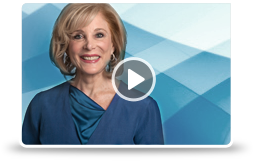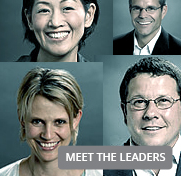Landmark Forum Syllabus: Day Two
I. The Illusion of Someday: Rethinking Possibility
If someone says to us, “X is possible,” we would normally understand them to mean that X does not now exist, and that its existence, even someday, is not certain. Our use of the word possibility is different from this ordinary usage. We are not speaking about something remote or something that may happen out in the future. In this session, we look at the notion of possibility in a whole new light.
This new view of possibility has an immediate and powerful impact on who we are, how we live our lives,
and how we see things – now, in the present. It has the power to move, touch, and inspire us; to shape our
actions; and to shift the way we are being right now.
II. The Myth of Is, Because, and I
In this section, we explore the nature of what we think of as reality, which includes an objective world that exists independent of us, where cause and effect are key operative factors; where I, as an identity, is a collection of characteristics, attributes, and experiences from the past. In exploring the nature of reality and taking apart these myths, something else becomes possible.
Here, we observe not so much the particulars of the realities we construct, but that it is human to construct such realities, and then forget that we are the ones who constructed them. As a result, we see that we no longer need to be confined to living within this limited range, and we gain the freedom to express ourselves fully.
III. Distinguishing: Opening New Worlds
To distinguish something means to take something from an undifferentiated background and bring it to the foreground. Just as learning a new language builds a bridge to a new culture, or the capacity to balance makes riding a bicycle possible, drawing distinctions gives us a facility to navigate in areas that were previously inaccessible.
Distinctions give power and breadth to the ability to live creatively and successfully. With this ability to distinguish, we are left with new worlds and opportunities for action.
IV. Freedom from Anxiety
Consider that one of the primary obstacles to effectiveness is fear. No matter how accomplished, successful, or courageous we are, fear and anxiety seem to play a role at some point in all of our lives. Often, we allow our fears and anxieties to stop us – to determine how much we’ll risk, and to limit the range in which we live – assigning them an unwarranted power and magnitude in our lives.
When we see that our relationship to our anxieties and fears inadvertently gives them a life of their own, something else becomes possible. We find ourselves being powerful in the face of what has stopped us before, and are free to rediscover and pursue our passions in life.
V. How Identities Get Constructed
In this session, we inquire into how our identity – who we consider ourselves to be – got created. The process began in childhood, as we gradually adopted ways of being and acting to deal successfully with things that didn’t quite go the way we thought they should. By the time we reach adulthood, we have assembled a set of practices and approaches, attributes and characteristics, that seem to give us a certain measure of success – that make up our personality, our style, who we consider ourselves to be.
When we begin to see that our identity was put together in response to something that we had determined shouldn’t be, the result is a new freedom in saying who we are – a fundamental shift in what we see and know as possible.




